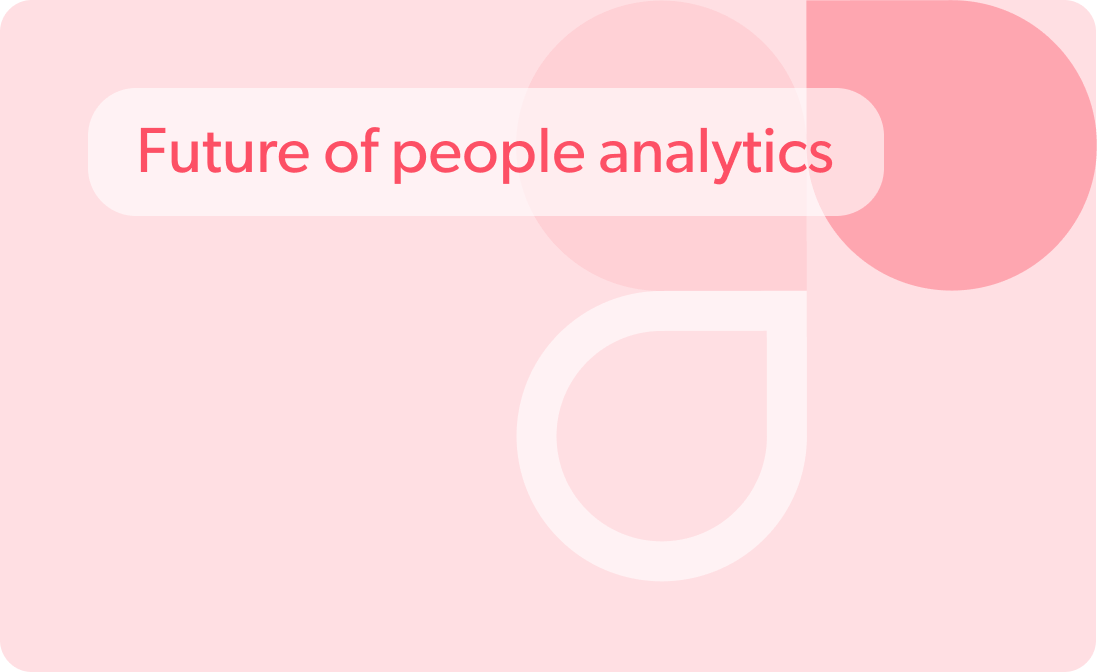Importance of strong data governance in the field of people analytics
Table of contents
- Data governance wake-up call: Lessons from the AWS S3 breach
- Deciphering data governance: Debunking common myths in people analytics
- A step-by-step process for implementing robust data governance specifically tailored for people analytics
- Best practices in data governance for people analytics
- Wrapping up
Data governance wake-up call: Lessons from the AWS S3 breach
In a significant incident, misconfigured Amazon Web Services (AWS) S3 buckets belonging to educational giant McGraw Hill exposed the personal information of over 100,000 students, the company’s source code, and digital keys. This breach highlighted the critical importance of data governance in people analytics.
The breach persisted for years, allowing unauthorized access to 22 TB of data, including students’ names, email addresses, performance records, and teachers’ materials. It also leaked private digital keys, posing a security risk. This story underscores the critical importance of data governance in safeguarding sensitive information and ensuring trust in people analytics.
In this blog post, we embark on a journey to understand all there is to know about data governance in people analytics. We’ll begin by debunking some of the top myths surrounding data governance in the context of HR and workforce analytics. Then, we’ll delve into the essential initiatives HR leaders should undertake to establish effective data governance practices. This comprehensive guide will equip you with the knowledge and insights needed to navigate the intricate landscape of people analytics while ensuring your data remains secure, compliant, and a valuable asset for informed decision-making. Let’s get started.
Deciphering data governance: Debunking common myths in people analytics
What does data governance mean in the field of people analytics?
Data governance in the context of people analytics refers to policies, procedures, and practices that ensure the accuracy, security, privacy, and responsible use of employee data. It encompasses the rules and framework governing data collection, storage, access, and utilization to drive informed decision-making within organizations.
Now that we have defined data governance in people analytics let’s debunk some of the top related myths.
Myth 1: People analytics doesn’t require data governance
Reality: Data governance is critical in people analytics by ensuring data accuracy, privacy, and security. A prime example of this necessity can be seen in misconfigured Amazon Web Services (AWS) S3 buckets. Without proper data governance, the insights from people’s data can become unreliable and potentially breach privacy regulations.
Myth 2: Data governance is all about restricting access to people’s data
Reality: In people analytics, data governance goes beyond mere access restrictions. It involves managing access to sensitive data while ensuring that authorized personnel have access to relevant information for making informed decisions. A 2021 Gartner Data and Analytics (D&A) governance survey revealed that 61% of leaders intended to enhance data for improving business processes and productivity.
Myth 3: Data governance slows down people analytics projects
Reality: Although there’s an initial commitment of time and resources in establishing data governance, it ultimately simplifies people analytics by offering high-quality data for analysis, thereby reducing the time needed for data preparation. According to the Digital Analytics & Data Governance Survey by ObservePoint, 34% of respondents identified improved decision-making as the most significant advantage of effective data governance.
Myth 4: Data governance is solely HR’s responsibility
Reality: Data governance in people analytics involves collaboration between HR, IT, legal, and business leaders. It’s a cross-functional effort to ensure data quality, security, and compliance.
Source: TechTarget
Myth 5: People analytics doesn’t need ongoing data governance
Reality: Data governance in people analytics is a continuous process that flexibly adjusts to evolving data requirements, technological advancements, and regulatory changes. To illustrate, it’s important to note that around 3% of business records can become obsolete monthly due to employee turnover. Therefore, it is crucial to monitor and update the data consistently.
Myth 6: Data governance in people analytics is exclusively about compliance
Reality: Although compliance is undeniably essential, data governance in people analytics encompasses more than just regulatory adherence. It also includes aspects such as data quality, standardization, and using data for informed decision-making. A survey by UBM sheds light on how leaders leverage data governance initiatives.
Source: Erwin by Quest
Myth 7: Data governance is expensive for people analytics
Reality: While implementing data governance does come with costs, the advantages it brings, such as enhanced data quality and risk mitigation, typically outweigh the expenses in the realm of people analytics. As of 2022, the global data governance market is estimated to be worth US$ 2.34 billion, and it is projected to grow at a Compound Annual Growth Rate (CAGR) of 21.2% from 2022 to 2030.
Understanding these myths and realities specific to people analytics can help organizations establish effective data governance practices for HR and workforce data, ensuring better decision-making and compliance with privacy regulations.
Unlocking the power of data governance in talent strategy
Discover how our smart labor market data, powered by robust data governance, empowers your organization to make data-driven decisions.
A step-by-step process for implementing robust data governance specifically tailored for people analytics
Organizations are increasingly recognizing the value of data in making informed decisions, and this extends to managing and analyzing employee-related data in the realm of people analytics. However, with great data comes great responsibility. An effective data governance HR strategy is essential to harness the full potential of people analytics while maintaining data accuracy, security, and compliance.
We have outlined the step-by-step process for implementing robust data governance tailored to people analytics. From defining governance objectives to continuous improvement, each step is carefully designed to ensure that employee data is handled with the utmost care, adhering to privacy regulations and maintaining high data quality.
Step 1. Data inventory and classification
- Start by conducting a comprehensive inventory of all data sources relevant to people analytics. This includes HR systems, employee databases, performance records, and any external data used.
- Classify data based on sensitivity, such as personal employee information, performance metrics, and sensitive HR documents.
- Use data classification tools or metadata tagging to label data according to its sensitivity and regulatory requirements.
Step 2. Data quality assessment
- Perform data quality assessments to identify missing values, inconsistencies, and inaccuracies in your people analytics data.
- Implement data cleansing processes to correct and enhance data quality.
- Establish data quality metrics and continuously monitor data for deviations from established standards.
Step 3. Data privacy and compliance
- Ensure compliance with data protection regulations, such as GDPR or HIPAA, by identifying personal data and implementing necessary safeguards.
- Anonymize or pseudonymize data when required to protect individual privacy.
- Develop data privacy policies and procedures and educate staff on compliance requirements.
Step 4. Access control and authentication
- Implement strict access controls to limit data access to authorized personnel.
- Utilize role-based access control (RBAC) to assign specific permissions based on job roles.
- Implement multi-factor authentication (MFA) to enhance data security.
Step 5. Data encryption
- Encrypt data at rest and in transit to protect it from unauthorized access.
- Utilize encryption protocols such as SSL/TLS for data in transit and encryption tools for data at rest.
- Manage encryption keys securely to prevent data breaches.
Step 6. Data auditing and logging
- Implement data auditing and logging mechanisms to track data access and modifications.
- Maintain an audit trail of all data-related activities, including who accessed the data, when, and for what purpose.
- Regularly review audit logs for suspicious or unauthorized activities.
Step 7. Data masking and redaction
- Apply data masking techniques to hide sensitive information while maintaining data usability for analytics.
- Implement redaction methods to remove or obscure sensitive data in reports and analytics outputs.
Step 8. Data retention and archiving
- Define data retention policies based on legal requirements and business needs.
- Archive historical data securely to ensure compliance and facilitate historical trend analysis.
Step 9. Metadata management
- Establish metadata management practices to document data lineage, definitions, and transformation processes.
- Utilize metadata repositories and catalogs to maintain metadata records.
Step 10. Data governance framework
- Develop a data governance framework tailored to people analytics, outlining roles, responsibilities, and processes.
- Define data ownership and stewardship for HR and analytics teams.
Step 11. Data governance tools
- Implement data governance software and tools to automate data quality checks, access control, and compliance monitoring.
- Utilize data governance platforms to centralize governance efforts and facilitate collaboration.
Step 12. Data governance training
- Provide training to HR and analytics teams on best practices, policies, and procedures for data governance.
- Ensure employees understand their roles and responsibilities in maintaining data quality and compliance.
Step 13. Regular audits and assessments
- Conduct regular audits and assessments of your data governance framework to identify areas for improvement.
- Adapt to evolving regulatory requirements and industry best practices.
Step 14. Continuous improvement
- Continuously monitor and improve data governance practices based on feedback, emerging threats, and changing business needs.
- Stay informed about updates to data protection regulations and adjust your governance accordingly.
Step 15. Incident response plan
- Develop an incident response plan for data breaches or privacy incidents specific to people analytics.
- Clearly define steps for reporting, containment, and mitigation of data breaches.
By following these steps, organizations can establish a robust data governance framework for people analytics, ensuring data accuracy, privacy, and compliance while leveraging data-driven insights for effective workforce management.
Best practices in data governance for people analytics
Implementing robust data governance practices becomes essential to ensure data quality, privacy, and compliance while harnessing the full potential of analytics. Explore best practices and considerations for enhancing data governance tailored to people analytics.
Establish people analytics Centers of Excellence
To bolster data governance in people analytics, consider the establishment of Centers of Excellence (CoEs) dedicated to this domain. These CoEs, comprising experts in the field, provide a centralized hub for data governance activities. By focusing on the unique requirements and challenges of people analytics, these centers can ensure that data is handled, analyzed, and protected effectively. Furthermore, CoEs facilitate cross-departmental collaboration and knowledge sharing, promoting an organization’s unified approach to data governance.
Prioritize data quality management policies
In the context of people analytics, data quality is of utmost importance. Organizations must define and implement data quality management policies addressing accuracy, completeness, and timeliness. Ensuring high-quality data is crucial for generating accurate insights about the workforce and automating data quality checks can help maintain data integrity. Data governance policies should also encompass the unique data attributes associated with people analytics, including employee records and performance metrics.
Tailor analytics governance to workforce data
Analytics governance extends beyond data governance and encompasses the management and oversight of analytics models themselves. In people analytics, organizations should focus on governance strategies that ensure the fairness, transparency, and accountability of analytics models used for workforce-related decisions. This includes addressing issues related to algorithmic bias, model explainability, and compliance with labor regulations.
Leverage federated data governance
People analytics often involves sensitive employee data, and a federated data governance approach can strike the right balance between centralization and department-specific needs. By centralizing certain aspects of data governance while allowing individual departments to manage data specific to their workforce, organizations can achieve consistency while catering to unique requirements. This approach ensures that sensitive HR data is protected while other departments maintain flexibility in their data governance practices.
Promote accountability and transparency
Organizations should promote accountability among users and decision-makers to foster a culture of responsible data usage in people analytics. This entails educating business users about the capabilities and limitations of analytics models and the ethical considerations associated with workforce data. Additionally, implementing transparent reporting mechanisms and accountability frameworks helps ensure that data-driven decisions align with organizational values and legal standards.
Wrapping up
As organizations seek to harness the potential of their workforce data, ensuring accuracy, privacy, and compliance becomes paramount. HRForecast’s commitment to providing smart labor market data underscores the need for rigorous data governance practices to maintain data quality and security. With the ability to make data-driven decisions, optimize talent strategies, and gain insights into workforce trends, HRForecast demonstrates how effective data governance in people analytics can lead to competitive advantages and informed decision-making. Book a consultation to unlock the full potential of your people analytics efforts with HRForecast.
Stay up to date with our newsletter
Every month, we’ll send you a curated newsletter with our updates and the latest industry news.





























 info@hrforecast.de
info@hrforecast.de
 +49 89 215384810
+49 89 215384810






